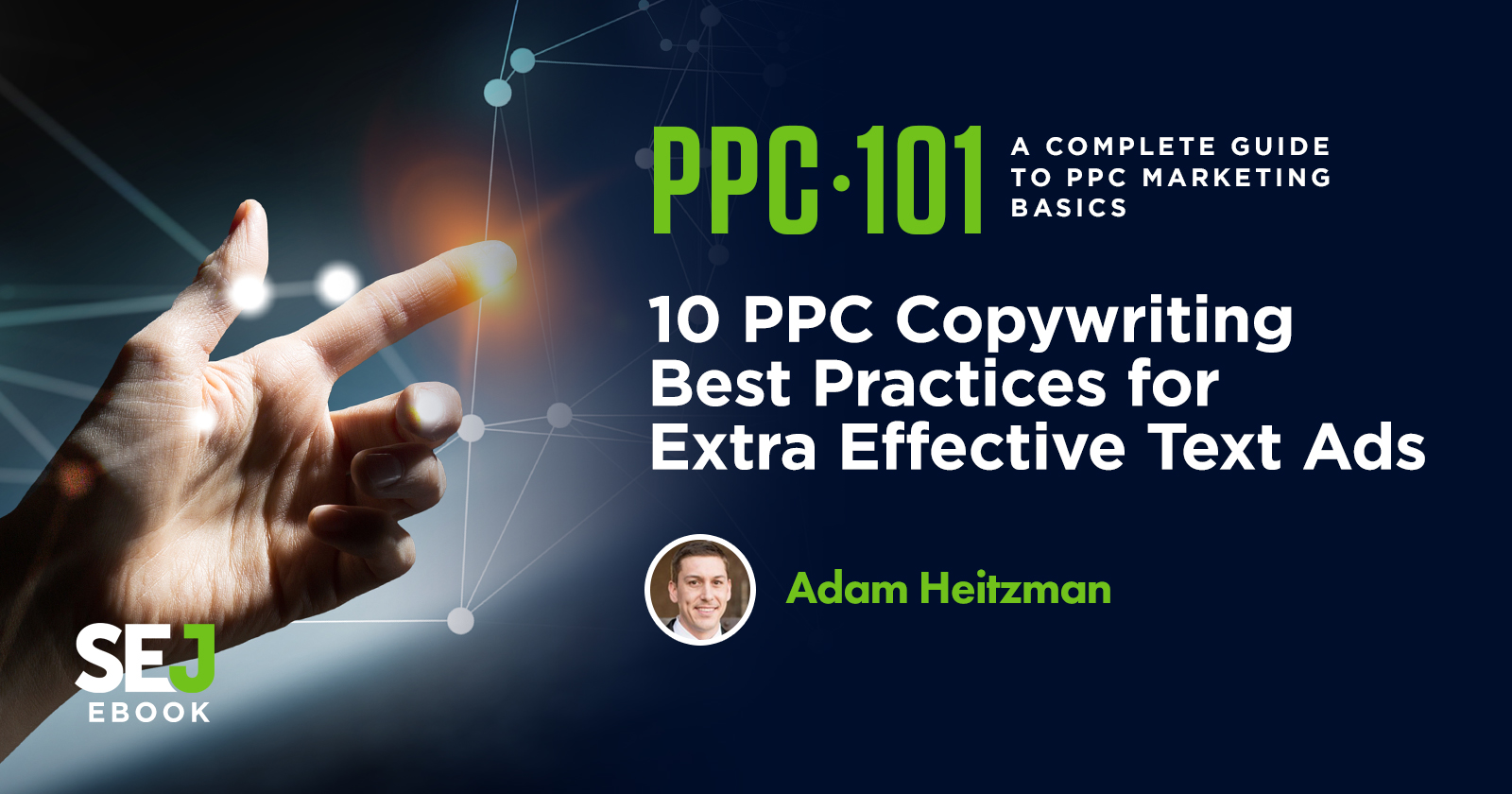Running PPC ads can be profitable – or it can be a waste of time.
What makes the difference?
Much of it has to do with your ad text.
Writing great copy for PPC ads is trickier than it might seem at first.
Platforms like Google Ads give you a limited amount of space to catch a searcher’s eye, get them interested in your offer, and entice them to click.
Unfortunately, there’s no winning formula for writing the perfect PPC ad (and if there were, everybody would be using it).
But there are many best practices you can follow to make your ad copy stronger.
Here are 10 tips you can apply to the next ad you write.
1. Know What Your Target Market Wants
Lots of businesses approach ad-writing by talking about themselves. That’s a natural thing to do, and after all, you’re an expert on what makes your company great.
But it’s actually the opposite of what you should be doing.
Customers seek you out because they need something, not because they’re curious about your business.
The best way to get the attention of your target audience is to show them that you understand – and can fix – their problems.
Before you start writing, do this exercise: put yourself in your ideal customer’s shoes.
Think about what kind of problem they’re experiencing, and imagine how they’d search for a solution.
Then, write your ad copy as a response to that imaginary customer’s needs and search habits.
2. Address Your Audience
Use the words “you” and “your” in your ads.
Speaking to your audience makes them feel important.
It creates the sense that your business is personable – you want to create a friendly and helpful relationship with customers right off the bat.
3. Use Emotional Triggers to Your Advantage
What’s the worst thing an ad can be?
If you said boring, you’re right.
A bad PPC ad is completely unmemorable.
It might be inoffensive and even well-put-together, but if no one ever feels intrigued or moved enough to click on it, why even bother publishing it?
You can avoid the fate of boring ads by choosing your words and making your audience feel something.
If you know what your target market wants, this shouldn’t be too difficult.
Zero in on the core problem or desire that brings customers to you, and brainstorm some ways to play up the emotion contained in it.
Negative feelings can actually be better stimuli than positive ones since people are motivated to avoid pain, so don’t be afraid to leverage your audience’s anxiety, anger, or FOMO (fear of missing out).
Some more positive emotions you can use to drive results include hopefulness, relief, and the feeling of being liked or admired by others.
4. Use Numbers, Trademarks and Register Marks (™, ®)
If you want to draw more eyes to your ads, try adding a number or two.
Figures and statistics have a way of getting people’s attention and have proven to increase CTR.
One way to use numbers is to name your product’s price or advertise a sale.
You can also try featuring a numerical statistic about your business, such as the number of customers you’ve helped.
Use exact numbers instead of round numbers, since people tend to trust exact numbers more.
Along with numbers, utilizing the TM and Registration Marks especially in your brand campaigns let the user that you are the official source for information.
This will help you get a leg up on the competitor’s ad.
5. Remove Objections
Most people need a little convincing before they click on an ad or make a purchase.
Come up with a few common objections to your service or selling points, and address those preemptively in your ad copy.
If you remove your audience’s excuses for not clicking before they even think of them, they’ll immediately feel more at ease with your business – and more likely to take you up on your offer.
6. Use All Your Space
Google Ads gives you three 30-character headlines plus two 90-character descriptions.
Maximize your ad’s power by packing all the information you can into this space.
If you’re short a few characters, see if you can come up with an extra detail or two to include.
Don’t forget about your display URL and ad extensions, either.
Your display URL doesn’t have to match the actual URL that your visitors will land on – its purpose is to show people what kind of page they’ll be taken to, so creating a custom URL that includes your keywords is a smart move.
Ad extensions can be another valuable way to get more real estate in search results.
Don’t rely on them to carry your message, though, since Google can’t guarantee that your extensions will show up every time your ad is run.
7. Emphasize What Makes You Stand Out
Make your ad more intriguing by setting yourself apart from your competitors.
You don’t have much space to pitch your unique selling proposition to your audience, so try to distill it down into a powerful kernel that will make readers want to know more.
Some helpful questions to ask yourself include:
- What does your business do better than or different from anyone else in the industry?
- Have you won any awards?
- Are you running any sales or making any special offers?
- What’s unique about your brand’s image?
8. Go Local
People like and trust local businesses over big, faceless national corporations.
Emphasize your location in your ads to give people an approachable first impression of your business.
You don’t actually have to operate in one location to play up a local-business image, either.
If you have multiple locations, create separate PPC campaigns to run in different geographical areas, and use specific location-based terms for each campaign.
Also, use local phone numbers instead of an 800 number in your ads.
9. Use Strong, Creative Calls to Action
Does the phrase “Call now” actually make you feel any sense of urgency?
Probably not.
Instead of resorting to worn-out clichés for your calls to action, come up with something that hits home a little bit more for your audience.
You already know what they want, so highlight that in your call to action.
Kick off your call to action with a strong verb, too – something like “Get,” “Save,” “Build,” “Download,” or “Join.”
10. Split Test Your PPC Ads Frequently
Regular testing is one of the surest ways you can make real improvements in your ads.
The more data you collect, the more patterns you’ll start to spot, and the better you’ll be able to adjust your ad strategy.
Intuition can be far off the mark when it comes to what will work in advertising, so it’s incredibly important to base your decisions on data rather than guesswork.
Some ideas for split tests you can try include:
- Placing your call to action in different locations.
- Comparing different calls to action.
- Experimenting with different numbers and statistics in your ads.
- Trying different display URLs.
- Highlighting different benefits of your product or service.
The Takeaway
Writing effective PPC ads is more of an art than a science.
Even marketers with a talent for wordsmithing sometimes run into writer’s block when trying to come up with the perfect ad text.
The good news?
With patience, practice, and testing, you’ll start to write PPC ads more quickly and easily – and you’ll get real results from them.





